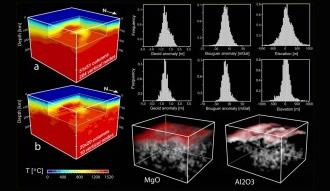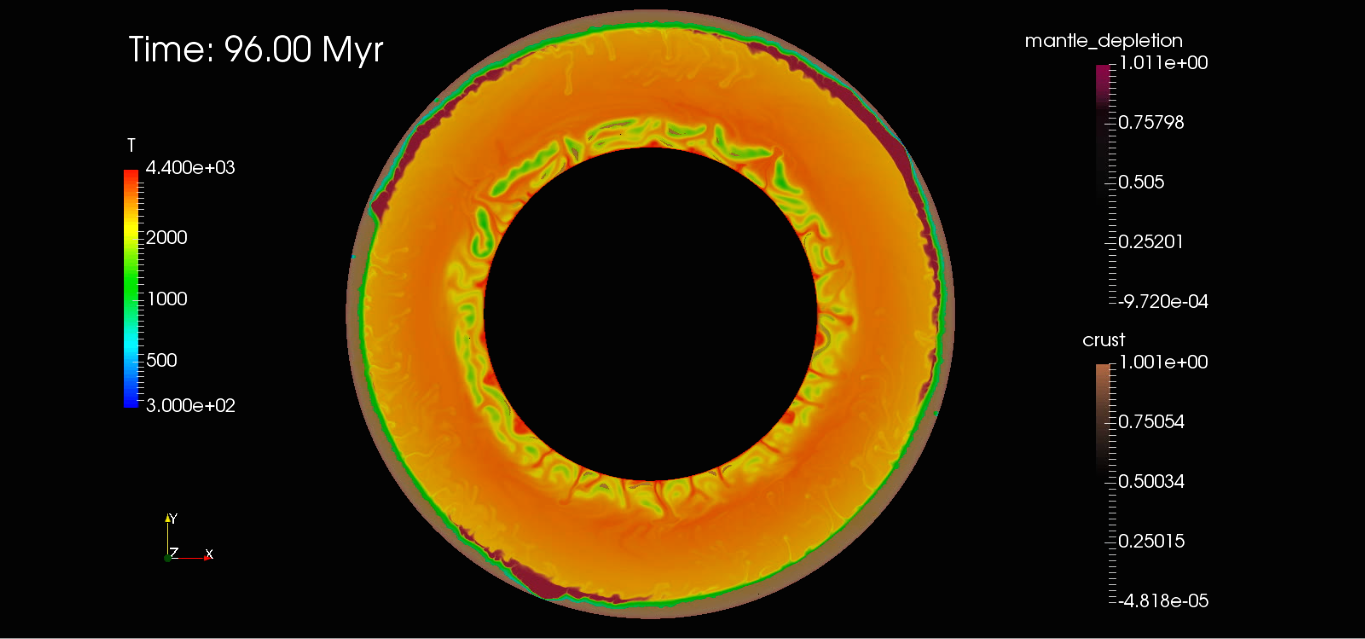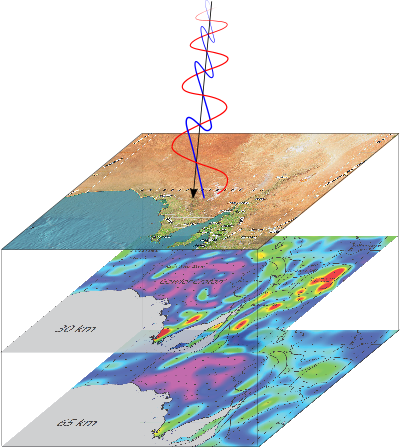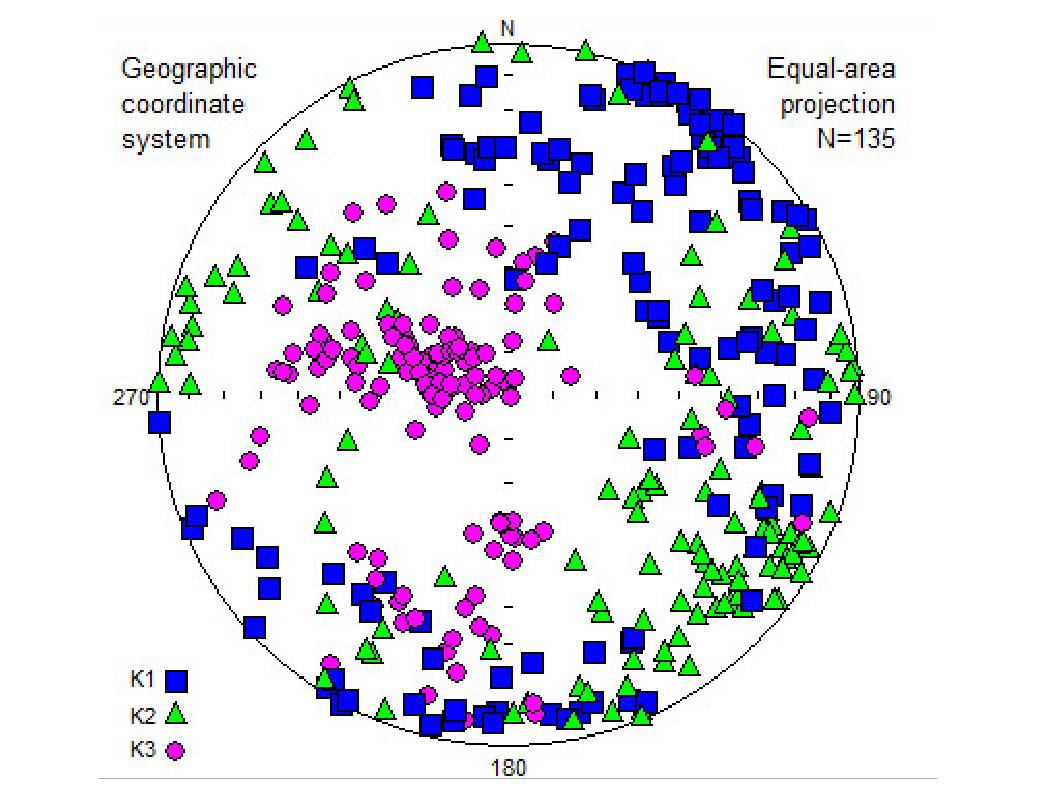Our projects
Please read below for more details on our current major projects
Multi-observable Inversions for the Thermochemical Structure of the Earth
 The lithosphere and sublithospheric upper mantle (above 410d) are highly heterogeneous in their chemistry, thermal structure and physical properties. Lateral discontinuities (i.e. sharp changes in the thermal and/or compositional structure) in these regions are known to correlate with the location of seismically active zones, oil producing basins, foci of magma intrusion/production, and giant ore deposits. Understanding the fine-scale thermochemical structure of the lithosphere and sublithospheric upper mantle is therefore one of the most important goals in Geosciences
The lithosphere and sublithospheric upper mantle (above 410d) are highly heterogeneous in their chemistry, thermal structure and physical properties. Lateral discontinuities (i.e. sharp changes in the thermal and/or compositional structure) in these regions are known to correlate with the location of seismically active zones, oil producing basins, foci of magma intrusion/production, and giant ore deposits. Understanding the fine-scale thermochemical structure of the lithosphere and sublithospheric upper mantle is therefore one of the most important goals in Geosciences
This project aims to develop thermodynamically-constrained multi-observable probabilistic inversions schemes, which have the potential to overcome the problems affecting other traditional inversions methods and provide realistic estimates of the present-day thermochemical structure of the lithosphere and upper mantle. The complete methodology has been recently published and we are currently working on expanding it and applying it to different continental areas.
Contacts: Juan Carlos Afonso and Yingjie Yang
Simulating Deep Planetary Interiors
 The evolution of rocky planets is controlled by deep convective motions within the interior, and how this flow couples with surface geology and environments. We have developed next-generation tools within MG3 that allow us simulate how deep mantle and core fluid flow generates magnetic fields, powers plate tectonics, generates volcanism, and ultimately controls mantle degassing and atmospheric evolution.
The evolution of rocky planets is controlled by deep convective motions within the interior, and how this flow couples with surface geology and environments. We have developed next-generation tools within MG3 that allow us simulate how deep mantle and core fluid flow generates magnetic fields, powers plate tectonics, generates volcanism, and ultimately controls mantle degassing and atmospheric evolution.
This project aims to apply our toolkit for modelling deep planetary processes to explore: i) the evolution of the early Earth, the effects of meteorite impacting, and the development of habitable conditions, ii) the tectono-volcanic history of Mars, and the loss of atmospheric water; iii) the interaction of the runaway greenhouse effect and tectonic history of Venus, iv) the longevity of Mercury's geodynamo, v) the internal processes that gave rise to the GRAIL mission gravity anomalies observed on the Moon, vi) tectonics on icy Moons and the effect on subsurface oceans, and vii) the tectonics of exoplanets.
Contacts: Craig O'Neill Siqi Zhang, Jonathon Wasiliev, Sam Matthews, Juan Carlos Afonso, the DEEP experimental group and the Cosmochemistry group.
Mantle Composition From Magnetotellurics
 Magnetotellurics (MT) is a passive geophysical method that measures the electrical conductivity of the Earth to depths of up to ~400 km. We are particularly interested in using MT to investigate the composition of the lithospheric mantle. Through this, we will better understand the controls on continental stability, the drivers behind plate tectonics, and the processes that form ore deposits. Our current focus questions are:
Magnetotellurics (MT) is a passive geophysical method that measures the electrical conductivity of the Earth to depths of up to ~400 km. We are particularly interested in using MT to investigate the composition of the lithospheric mantle. Through this, we will better understand the controls on continental stability, the drivers behind plate tectonics, and the processes that form ore deposits. Our current focus questions are:
(1) What is the lithospheric-scale electrical conductivity structure beneath Australia’s giant ore deposits? MT can image the fluid flow pathways that were created when these deposits formed.
(2) What is the hydrogen content of stable continental lithospheric mantle? Hydrogen weakens mantle minerals, so the stable continents should contain little hydrogen. MT is sensitive to hydrogen and can therefore test this hypothesis.
(3) How well do mantle xenoliths represent the broader mantle? Mantle xenoliths are rocks brought up to the surface, which give us very detailed information but only on a tiny volume. Geophysical data provide more cryptic information on a much broader volume. By directly comparing the two we aim to improve our understanding of both.
Contacts: Kate Selway, Sinan Ozaydin, Alice van Tillburg, Juan Carlos Afonso
Anisotropy of Magnetic Susceptibility
 Investigating the internal structure and source location of a large ignimbritic flow by anisotropy of magnetic susceptibility (AMS) and other magnetic studies.
Investigating the internal structure and source location of a large ignimbritic flow by anisotropy of magnetic susceptibility (AMS) and other magnetic studies.
The Dundee rhyodacitic ignimbrite is a large Late Permian welded ignimbrite which outcrops in the New England Orogen in NSW. The ignimbrite occurs as several distinct masses and it is not clear as to their overall relationship and the source location(s) of the ignimbrite. The ignimbrite has a distinct magnetic signature.
This project is using the AMS of samples, which can reflect the geological fabric of a rock, to map the foliation and lineation of oriented samples to plot the structure of the different masses and possibly locate the source area for the ignimbrite. As well, airborne magnetic and ground gravity data are being modelled to aid the AMS investigation.
Contact: Mark Lackie
Global Lithosphere and Upper Mantle Reference Model
We are working on a new global model for the Earth’s lithosphere and upper mantle (LithoRef18) obtained by incorporating seismic, thermal and petrological information within a formal joint inversion of 3D gravity anomalies, geoid height, satellite-derived gravity gradients and absolute elevation. The model includes crustal thickness, average crustal density, lithospheric thickness, depth-dependent density of the lithospheric mantle, lithospheric geotherms, and average density of the sublithospheric mantle down to 410 km depth.
Our results for lithospheric thickness and sublithospheric density structure are in excellent agreement with estimates from recent seismic tomography models. A comparison with higher resolution regional studies in a number of regions around the world indicates that our values of crustal thickness are an improvement over previous global crustal models.
Considering the model‘s features and data fitting statistics, LithoRef18 will be useful in a wide range of geophysical and geochemical applications by serving as a reference or initial lithospheric model for i) higher-resolution gravity, seismological and/or integrated geophysical studies of the lithosphere and upper mantle, ii) including far-field effects in gravity-based regional studies, iii) global circulation/convection models that link the lithosphere with the deep Earth, iv) estimating residual, static and dynamic topography, v) thermal modelling of sedimentary basins, v) studying the links between the lithosphere and the deep Earth, among others. The inversion methodology presented/used in this work can be applied in other planets for which potential field data sets are either the only or major constraints to their internal structures (e.g. Moon, Venus, etc).
This project is a starting point towards a more ambitious reference model of the thermochemical structure of the Earth’s lithosphere and upper mantle based on multi-observable probabilistic tomography at global scale (Afonso et al., 2013a,b; 2016).
Contacts: Juan Carlos Afonso and Farshad Salajegheh
Multiphase Multicomponent Reactive Transport in the Earth's Interior
This project aims to describe the evolution of complex geodynamic/geochemical problems governed by Multi-Phase Multi-Component Reactive Transport (MPMCRT), such as melt generation and percolation, metasomatism, magmatic differentiation and fractionation of chemical elements. This novel approach provides a flexible platform to study the dynamics and non-linear feedbacks within various systems of different nature and scales, as well as to track changes in mantle processes and constrain their chemical composition and physical properties through time. It represents a conceptual and numerical approach to model processes in the Earth's interior that involve multiple phases that simultaneously interact thermally, mechanically and chemically. Our approach notably includes major- and trace-element transport, diffusion-controlled trace-element re-equilibration or rheological changes associated with melt generation and migration in the Earth’s mantle.
Contacts: Juan Carlos Afonso and Beñat Oliveira Bravo
Probabilistic MT Inversion with Multi-observable Thermochemical Tomography
Multi-observable probabilistic inversion (Afonso et al., 2013a,b; 2016) for the compositional and thermal structure of the lithosphere is providing a new picture of the complex physicochemical interactions between plates and the underlying convecting upper mantle. Of particular importance is the inversion of magnetotelluric (MT) data, as it provides complementary information on the temperature and water content that other observables cannot constrain. MT holds, therefore, great potential for understanding and imaging the complex fluid-rock interactions responsible for mineralization events due to its sensitivity to water and other volatiles.
In order to implement MT data into multi-observable probabilistic inversions for 3D imaging of deep thermochemical anomalies and fluid pathways in the Earth, we first need to solve the problem of computational efficiency in solving Maxwell’s equations in 3D. For this, we will combine state-of-the-art probabilistic inversion methods with advanced algebraic decomposition techniques such as reduced basis to obtain fast, yet accurate, solutions to the 3D MT problem.
The aim of the project is to construct the first conceptual and numerical platform capable of jointly inverting 3D MT, seismic, and gravity data in a probabilistic manner.
Contacts: Juan Carlos Afonso, Maria (Coti) Manassero and Kate Selway
